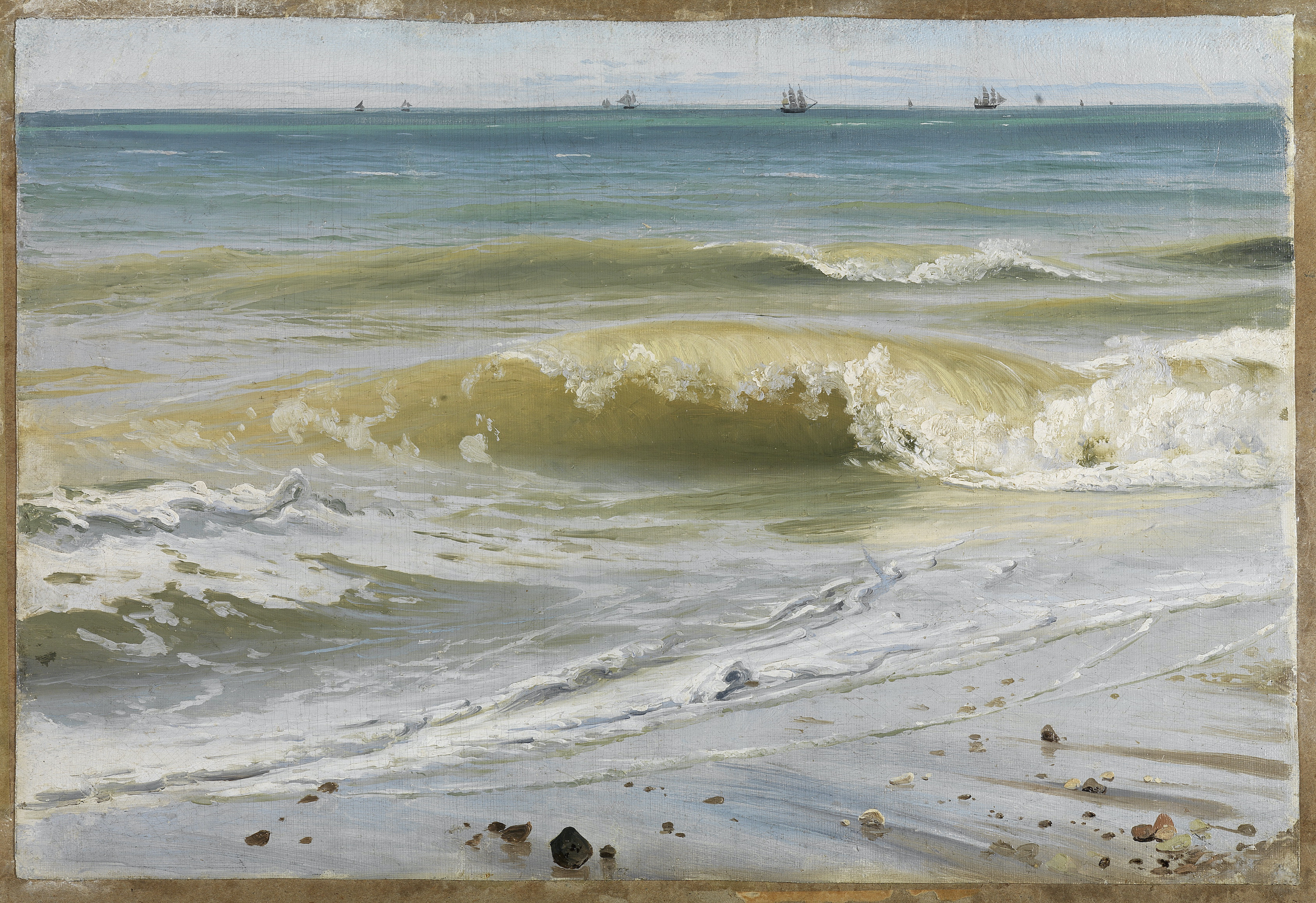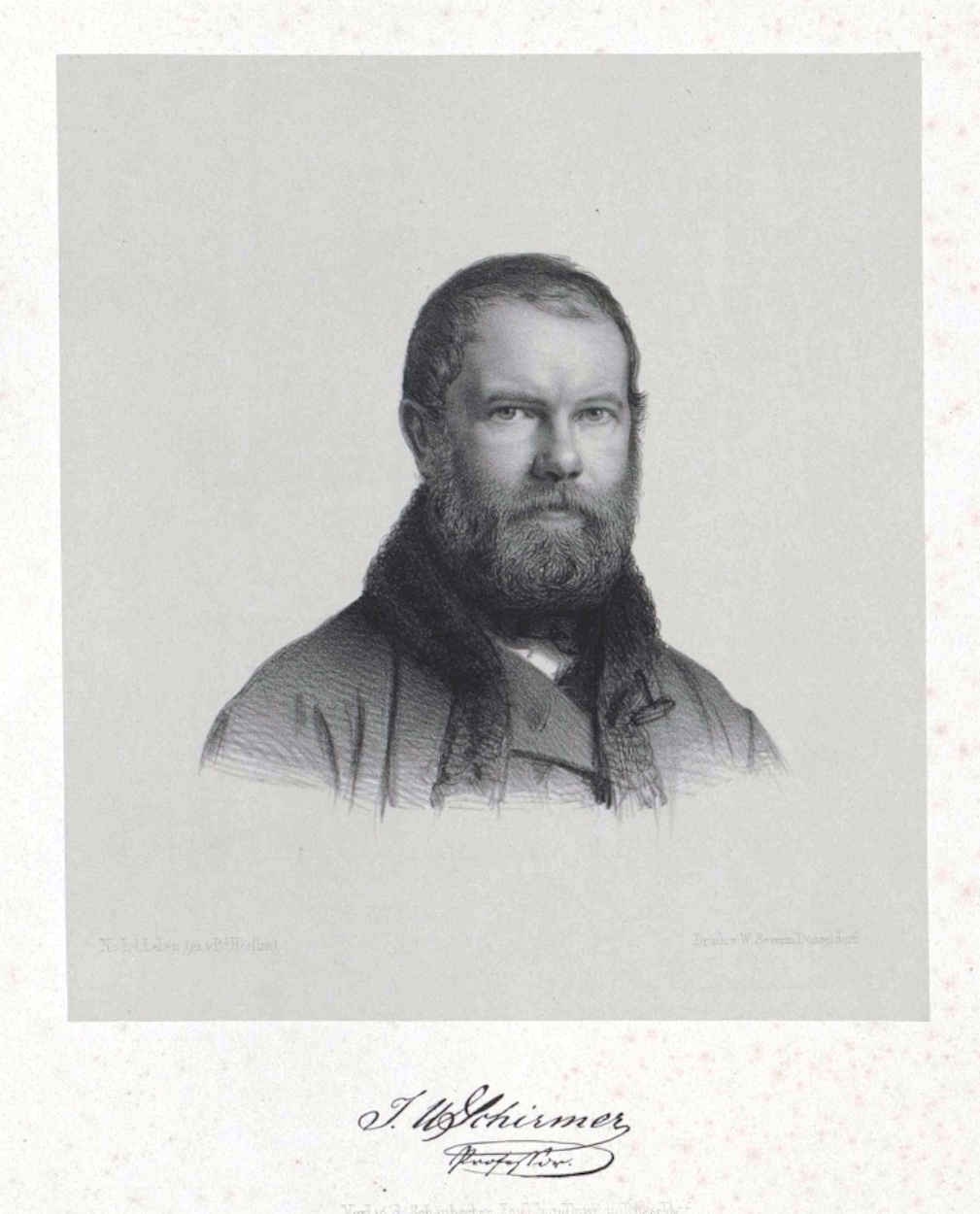Johann Wilhelm Schirmer ranks among the great innovators of landscape painting in Germany in the 19th century. In a breathtaking way, he was capable of capturing nature in his oil studies. His early sea study shows the moving sea at the coast of Normandy in 1836 (still three years before photographic techniques were made public), with all the characteristics of an immediate snapshot in time. The close framing of the picture emphasizes the intensity of the natural spectacle: the grey-green waves rolling in and the wild spume in the foreground and on the rock on the right, which only minimally but effectively accentuates the composition. The viewing angle onto the water is so close and steep that the eye is offered only an unusually small strip of sky on the horizon.
Schirmer’s painting is part of a whole series of similar illusionistic studies, which reveal his great artistry. Apart from his talent for faithfully reproducing various states of geological structures, water, and light down to the last detail, there were two other aspects that were important here: firstly, his sensitive power of observation, which consistently lead Schirmer into nature to train his eye, and secondly, an enormous intellectual power of abstraction, which becomes particularly evident in the sea study. When painting in front of nature, the artist alternately looks at the motif and at his painting cardboard. In this case, Schirmer stood directly on the shore and watched the waves swiftly rolling in. Each time he looked up from the picture, however, the situation he had just observed had changed. Thus, Schirmer captured countless moments with his eyes, which he finally assembled into a small painting of an astonishing and compelling nature that seems to us to be a single moment.
We present today's work thanks to the Staatliche Kunsthalle Karlsruhe.
P.S. Missing summer? Here are seven Luminist seascapes to make you want a beach vacation! <3


 Johann Wilhelm Schirmer
Johann Wilhelm Schirmer